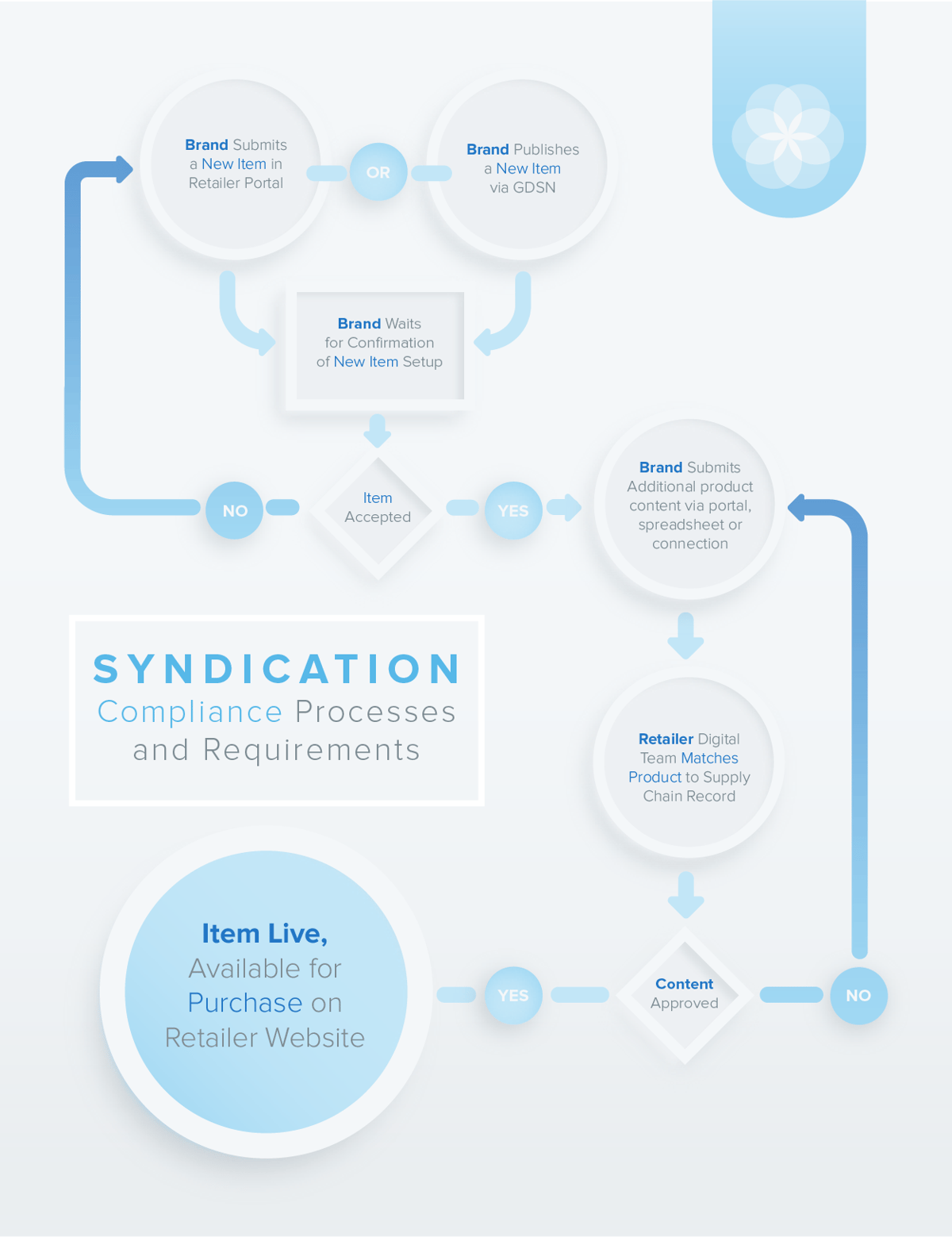What shoppers want when buying home and garden products online: research capabilities, installation and product use case videos, and precise dimension information. Home and garden brands compete to create the most compelling online experiences — and the digital shelf is continually evolving.
Brands must have the ability to syndicate across each digital shelf endpoint, while ensuring a consistent brand experience, to deliver the optimal digital experiences for shoppers.
Syndication: The Right Content at the Right Time
At its simplest, syndication is about sending the right content to the right place. Syndication can’t begin or end with mere data delivery to grow product sales. For products to be discovered and bought, content must go live and be impactful.
Some retailers and distributors use a variety of methods to receive product content:
- Application Program Interface (API)
- Global Data Synchronization Network (GDSN)
- Digital Catalogs
- Product Feeds
- Spreadsheet Templates
Each retailer also has a set of compliance processes and requirements before a product goes live.
Syndication Compliance Processes and Requirements

4 Syndication Best Practices for Item Set Up
1. Channel-Specific Content Optimization
Optimize product content for each audience and channel. By modeling and managing channel-specific versions of your product content, brands can adjust data for one channel — or across the core data set — depending on needs.
2. Oversight-Dependant Team Access
Empower teams with access — but build in oversight. Your information technology (IT), master data management (MDM), ecommerce, marketing, and sales teams each need access to up-to-date product content. This access empowers them to drive products to market and win sales fast.
Ensure brand consistency across all digital touchpoints by leveraging security and auditing capabilities layered on top of data. By applying attribute-level checks against internal schemas, brands can ensure compliance before publishing to each channel.
3. Create Dynamic Experiences
Syndicate all rich content, including videos, enhanced content, product tours, 360-degree product image spins, from one unified platform. By leveraging your full set of product data and transforming that data into dynamic experiences.
Brands can tell the best product stories across all touchpoints. How? By leveraging their complete collection of product data and turning that data into dynamic experiences where rich media is available.
4. Continuously Improve Product Experiences
Analyze product detail pages, incorporate channel-specific action items directly into your product content, and rapidly publish the updates. These steps will help drive sales and give your brand the ability to stay ahead of the competition.
Written by: Cara Wood
Cara Wood (she/her) is a writer and former director of brand journalism at Salsify, where she specialized in creating content to help brands excel in ecommerce. Her work has helped organizations enhance their digital shelf and product experience management strategies.
Recent Posts
Holiday Shopping Season: When Will Holiday Shoppers Start Spending?
Consumer Spending Trends: How Much Will Holiday Shoppers Spend in 2025?
Ecommerce Trends: 5 High-Impact Commerce Trends To Prepare for in the Back Half of 2025
Subscribe to the Below the Fold Newsletter
Standing out on the digital shelf starts with access to the latest industry content. Subscribe to Below the Fold, our monthly content newsletter, and join other commerce leaders.


.svg)